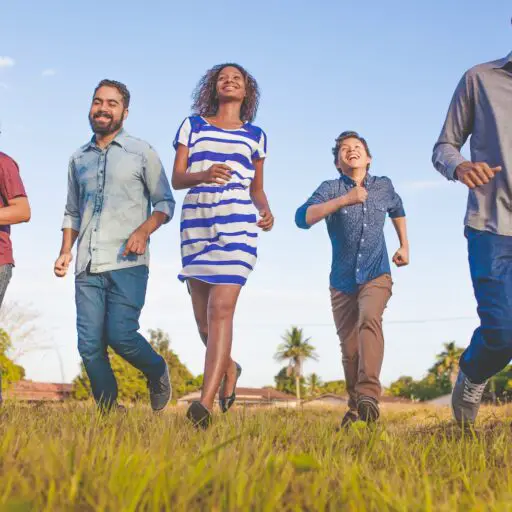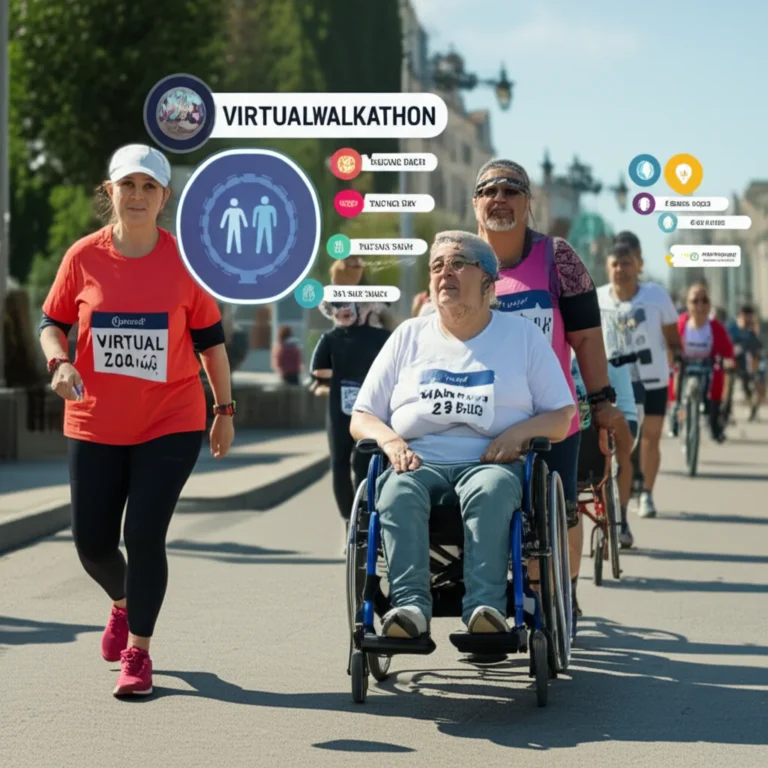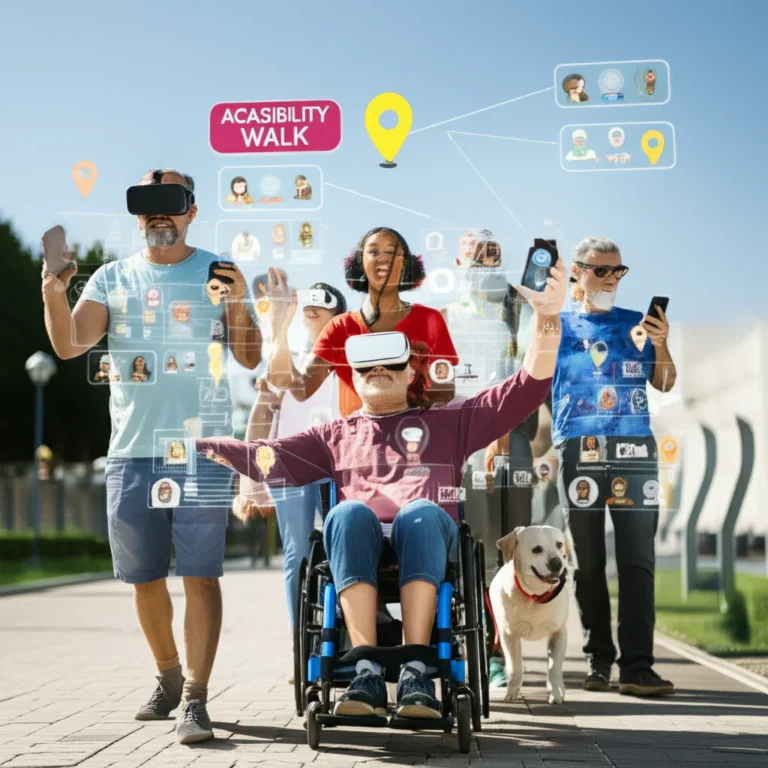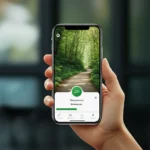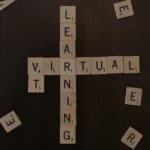Support our educational content for free when you purchase through links on our site. Learn more
7 Secrets to Accessible Virtual Charity Events in 2025 🎉
Did you know that over 1 billion people worldwide live with some form of disability, yet many virtual charity events still unintentionally exclude them? At Walkathon Virtual™, we’ve witnessed firsthand how thoughtful accessibility transforms online fundraisers from frustrating experiences into empowering, inclusive celebrations. Imagine David, a blind participant who hesitated to join a virtual walkathon—until a simple pre-event call and accessible design turned him into one of the event’s most engaged community members. Curious how you can create such magic for your next event?
In this comprehensive guide, we reveal 7 essential strategies to make your virtual charity events truly accessible—from choosing the right platforms and designing inclusive content to leveraging cutting-edge captioning tools and fostering real-time engagement. Whether you’re a seasoned organizer or just starting out, these expert tips will help you unlock the full potential of your fundraiser and welcome every participant with open arms.
Key Takeaways
- Accessibility is essential for maximizing reach, engagement, and fundraising success in virtual charity events.
- Design for diverse needs including visual, hearing, mobility, and cognitive impairments to create a welcoming experience for all.
- Choose platforms with robust accessibility features like real-time captions, screen reader support, and keyboard navigation.
- Communicate clearly and early by sharing agendas, tech guides, and accessibility statements well before the event.
- Leverage professional captioning and assistive technologies for accuracy and inclusivity.
- Involve people with disabilities in planning and testing to ensure your event truly meets their needs.
- Post-event follow-up with accessible recordings and feedback requests keeps your community connected and growing.
👉 Shop accessibility tools and platforms:
- Zoom Video Conferencing on Amazon
- Microsoft Teams on Amazon
- Rev Live Captioning Services
- Otter.ai Transcription Services
Table of Contents
- ⚡️ Quick Tips and Facts
- The Evolution of Virtual Charity Events: A Journey Towards Digital Inclusion
- Why Accessibility Matters: Unlocking the Full Potential of Your Virtual Fundraiser
- Understanding Diverse Needs: Who Are We Designing For?
- The Walkathon Virtual™ Blueprint: Crafting Truly Accessible Online Charity Events
- Tools and Technologies for Seamless Accessibility: Our Top Picks
- Overcoming Common Hurdles: Troubleshooting Accessibility Challenges
- Success Stories from the Virtual Track: Inspiring Accessible Walkathons
- Partnering for Progress: Organizations Championing Digital Accessibility
- The Future of Accessible Virtual Events: What’s Next on the Horizon?
- Conclusion: Stepping Forward Together for a More Inclusive World
- Recommended Links: Your Go-To Resources for Accessible Event Planning
- FAQ: Your Burning Questions About Virtual Event Accessibility, Answered!
- Reference Links: The Research Behind Our Recommendations
Here is the body of the article, written according to your specifications.
⚡️ Quick Tips and Facts
Welcome, virtual walkers and world-changers! Before we dive deep into the nitty-gritty of creating flawlessly accessible virtual charity events, here are some quick takeaways from your favorite personal trainers and health pros at Walkathon Virtual™.
- Globally, over 1 billion people live with some form of disability. That’s 15% of the world’s population you could be excluding without an accessible event. (World Health Organization)
- ✅ Accessibility is not an afterthought; it’s a cornerstone of good design. Integrating accessibility from the start saves time, money, and headaches.
- Proactive communication is your best friend. The experts at Autistica recommend inviting people to share their needs in advance: “If you have additional needs, let the organiser know and we’ll do what we can to help you.”
- ❌ Don’t assume! Never assume what a person can or cannot do. Always provide options and ask about individual needs.
- Technology can be a double-edged sword. Platforms like Zoom and Microsoft Teams have built-in accessibility features, but they aren’t always perfect. Know their limits!
- Captions are for everyone! 80% of people who use captions are not deaf or hard of hearing. They aid comprehension and engagement for a wide audience. (Ofcom)
- Think beyond the live event. Providing recordings, transcripts, and follow-up materials makes your content last longer and reach more people.
The Evolution of Virtual Charity Events: A Journey Towards Digital Inclusion
Remember when charity events meant lacing up your sneakers for a 5K on a specific Saturday morning, rain or shine? We do! While those events have their charm, the digital revolution has blasted the doors wide open. Suddenly, you could join a walkathon from your living room, your local park, or even a treadmill in another country. This shift created incredible opportunities for Global Walkathon Events.
Initially, the focus was just on getting events online. It was a mad dash to replicate the in-person experience in a digital format. But as we’ve all settled into this new virtual world, a more important question has emerged: Is this virtual space truly open to everyone?
The journey has shifted from mere participation to meaningful inclusion. We’ve learned that simply hosting an event on a video platform isn’t enough. True success lies in crafting an experience where every single person, regardless of their ability, feels welcome, engaged, and empowered to contribute to a cause they care about. It’s about moving from a one-size-fits-all model to a design-for-all philosophy.
Why Accessibility Matters: Unlocking the Full Potential of Your Virtual Fundraiser
So, why are we at Walkathon Virtual™ so passionate about this? Is it just about being nice? Well, yes, but it’s also about being smart, effective, and successful. The question of Are virtual walkathons accessible to people with disabilities? is central to our mission.
Here’s the breakdown:
- Expanded Reach, Bigger Impact: By designing for accessibility, you’re not just accommodating a small group; you’re opening your event to a massive, often untapped, community of passionate supporters, donors, and advocates. More participants mean more funds raised and greater awareness for your cause.
- Enhanced User Experience for All: Here’s a secret: features designed for accessibility often improve the experience for everyone. Think about curb cuts on sidewalks—designed for wheelchairs, but also used by people with strollers, delivery carts, and rolling luggage. Similarly, captions, clear navigation, and well-structured content benefit all your participants.
- It’s a Legal and Ethical Imperative: As the disability charity Scope highlights, under laws like the Equality Act 2010, event organizers have a responsibility to make “reasonable steps” to not disadvantage disabled people. Beyond the legalities, it’s simply the right thing to do. It reflects your organization’s values and commitment to inclusivity.
- Boosts Your Brand Reputation: An organization that champions accessibility is seen as modern, empathetic, and responsible. This builds trust and loyalty among your community. It’s a powerful part of your story and your brand. The Health Benefits of Walkathons are for every body, and your event should reflect that.
Understanding Diverse Needs: Who Are We Designing For?
To build a truly accessible event, you first need to understand the potential barriers your participants might face. Accessibility isn’t a single checkbox; it’s a spectrum of considerations.
Visual Impairments: Seeing Beyond the Screen
This category includes people who are blind, have low vision, or are colorblind.
- The Challenge: Participants may rely on screen readers (software that reads on-screen text aloud) or screen magnifiers. Images without descriptive “alt text” are invisible to them. Poor color contrast can make text unreadable. Complex layouts can be a navigational nightmare.
- Our Pro Tip: When presenting, describe your slides and any key visual content. Don’t just say “as you can see on this graph.” Instead, say “This bar graph shows a 50% increase in participation, with the blue bar representing last year’s numbers.” This simple habit makes a world of difference.
Hearing Impairments: Making Every Word Count
This includes people who are deaf or hard of hearing.
- The Challenge: Audio-only content is a complete barrier. Fast-paced discussions without visual cues can be impossible to follow.
- Our Pro Tip: Always provide high-quality, real-time captions. As the guide from Scope points out, checking “Will there be subtitles?” is a key question for virtual event attendees. Don’t rely solely on auto-captions, which can be inaccurate. For key events, hiring a professional captioner or a BSL interpreter is the gold standard.
Mobility Impairments: Moving Freely in the Virtual Space
This involves individuals who may have difficulty with fine motor control, making mouse or keyboard use challenging.
- The Challenge: Websites and platforms that can’t be navigated with a keyboard alone are inaccessible. Timed activities that require quick, precise clicks can exclude people. Even the physical act of using certain hardware, like VR controllers, can be a barrier.
- Our Pro Tip: Ensure your event platform and website are fully keyboard-navigable. This means someone can use the “Tab” key to move between all interactive elements like links, buttons, and forms. Test it yourself! Can you register for your own event without touching your mouse?
Cognitive and Neurological Differences: Clarity and Comfort for All
This broad category includes autism, ADHD, dyslexia, and anxiety disorders, among others.
- The Challenge: Walls of text, sensory overload (too many flashing elements or sounds), confusing instructions, and social pressure can create significant anxiety and barriers to participation.
- Our Pro Tip: Share information in advance! This is a huge one. As recommended by Autistica, sending out an agenda, speaker bios, and a guide to the technology beforehand can drastically reduce anxiety. During the event, use clear and simple language, allow for processing time, and offer multiple ways to participate (e.g., chat, non-verbal feedback).
The Walkathon Virtual™ Blueprint: Crafting Truly Accessible Online Charity Events
Ready to build your masterpiece? Here is our five-step blueprint for success, packed with our team’s hands-on experience. This is more than a checklist; it’s a mindset for inclusive Fundraising Ideas.
1. Choosing Your Platform Wisely: Tech That Empowers, Not Excludes
Your virtual venue is the foundation of your event. A poor choice here can create barriers before you even start.
- Assess Built-in Features: Don’t just look at the price tag. Dig into the accessibility documentation of any platform you consider.
- Test, Test, Test: Get your team, including people with disabilities, to test the platform. Can they navigate it easily? Do the features work as advertised?
- Consider the User Interface: Is it clean and intuitive? Or is it cluttered and confusing? Simplicity is often a hallmark of accessible design.
Here’s a quick comparison of popular platforms:
| Feature | Zoom | Microsoft Teams | Google Meet |
|---|---|---|---|
| Auto Captions | ✅ (Good) | ✅ (Excellent) | ✅ (Good) |
| Manual Captions | ✅ (Can assign a typist) | ❌ (Relies on auto) | ❌ (Relies on auto) |
| Screen Reader Support | ✅ (Good support) | ✅ (Strong integration) | ✅ (Good support) |
| Keyboard Navigation | ✅ | ✅ | ✅ |
| Non-Verbal Feedback | ✅ (Raise hand, yes/no, etc.) | ✅ (Raise hand, reactions) | ✅ (Raise hand, reactions) |
| ASL/BSL Interpreter | ✅ (Can spotlight/pin) | ✅ (Can spotlight/pin) | ✅ (Can pin) |
2. Designing Inclusive Content: From Registration to Race Day
Your content is everything from your registration form to your social media posts to the presentations on event day.
- Use Clear, Simple Language: Avoid jargon and complex sentences.
- Structure Your Text: Use headings, subheadings, and bullet points to break up text and make it scannable.
- Provide Alt Text for All Images: Describe the content and function of every image.
- Ensure High Color Contrast: Use tools like WebAIM’s Contrast Checker to ensure your text is readable against its background.
- Make Forms Accessible: Label all form fields clearly and ensure they can be completed using a keyboard.
3. Communication is Key: Spreading the Word Accessibly
Your Event Promotion must be as accessible as the event itself.
- The Accessibility Statement: On your event page, include a clear statement about your commitment to accessibility. Provide a contact person for accommodation requests. Autistica suggests a simple line: “If you have additional needs, let the organiser know and we’ll do what we can to help you.”
- Provide Info in Multiple Formats: Offer information as a webpage (HTML), a downloadable PDF, and maybe even a plain text version.
- Send Info in Advance: A week before the event, send a detailed email with the agenda, tech guide, speaker info, and a copy of the presentation slides. This is a game-changer for reducing anxiety and helping people prepare.
4. Live Event Accessibility: Real-Time Inclusivity
It’s showtime! Here’s how to ensure a smooth and inclusive experience for everyone.
- Start with an Accessibility Check-in: At the beginning of the event, briefly explain the accessibility features available (e.g., “Captions are available at the bottom of your screen,” “Please feel free to use the chat to ask questions,” “We will be describing all visual content.”).
- Have a Designated Accessibility Facilitator: Assign one person to monitor the chat for questions and technical issues, so the main speaker can focus on presenting.
- Pace Yourself and Describe Visuals: Speak clearly and at a moderate pace. Remember to describe what’s on your slides.
- Use the Platform’s Features: Encourage the use of “raise hand” functions to manage questions and give everyone a chance to speak. A moderator can read out questions from the chat to include those who prefer not to speak. The video, What Makes a Virtual Event Accessible, embedded in this article provides an excellent overview of these real-time considerations.
5. Post-Event Engagement: Keeping the Connection Alive
The event isn’t over when the live stream ends.
- Send a Follow-up Email: Include a recording of the event (with cleaned-up captions or a transcript), a summary of key points, and links to resources mentioned.
- Request Feedback: Ask for feedback on the event’s accessibility. What worked well? What could be improved? This is invaluable for your next event.
- Share the Success: Celebrate the funds you raised and the community you built, reinforcing the message that everyone was a valued part of that success.
🛠️ Tools and Technologies for Seamless Accessibility: Our Top Picks
Having the right tools in your belt can make all the difference. Here are some of the technologies we rely on at Walkathon Virtual™ to create our events.
Captioning and Transcription Services: Hear Every Voice
While auto-captions are getting better, they’re not foolproof. For maximum accuracy, especially for keynotes or important sessions, consider a professional service.
- Live Captioning (CART): Services like Rev or Ai-Media provide human-powered, real-time captions for ultimate accuracy.
- Post-Event Transcription: Use services like Otter.ai or Rev to create accurate transcripts and captions for your event recording. This is great for creating accessible archives of your content.
Screen Readers and Assistive Technologies: Navigating with Ease
You don’t need to buy these, but you do need to be aware of them. Understanding how they work will help you design compatible content.
- Popular Screen Readers: JAWS, NVDA (free!), and Apple’s built-in VoiceOver are the most common.
- How to Test: You can download NVDA for free to test how your website or registration page sounds to a screen reader user. It’s an eye-opening (and ear-opening!) experience.
Interactive Features and Design Principles: Engaging All Senses
Accessibility isn’t just about technical compliance; it’s about engaging design.
- Polling and Q&A Tools: Use built-in platform features or integrate tools like Slido to allow for anonymous questions and real-time feedback, which can be less intimidating for many users.
- Accessible Design Resources: Websites like Euan’s Guide and AccessAble provide fantastic real-world reviews and standards, even for physical venues, that can inspire your digital approach.
🚧 Overcoming Common Hurdles: Troubleshooting Accessibility Challenges
Even with the best planning, challenges can arise. Here’s how to tackle them head-on.
- Challenge: A last-minute speaker sends a presentation full of tiny text and bad color contrast.
- Solution: Keep an accessible slide template on hand. Quickly copy their content into your template to fix the most glaring issues. Gently educate the speaker for next time.
- Challenge: The live auto-captions are mangling technical terms or speaker names.
- Solution: Have your accessibility facilitator manually correct key terms in the chat. Apologize for the errors and assure attendees that a corrected transcript will be provided after the event.
- Challenge: A participant who relies on a screen reader is having trouble with your registration form.
- Solution: Be prepared to offer 1-on-1 assistance. As Autistica suggests, offering a practice call or personal help is a powerful accommodation. Have an alternative registration method ready, like a simple email or phone call.
🏆 Success Stories from the Virtual Track: Inspiring Accessible Walkathons
Let us tell you about “Walk for Wishes” last spring. We had a participant, David, who is blind and an avid user of Distance Walking Techniques. He was hesitant to join, worried he wouldn’t be able to navigate the event app or engage with the community.
We scheduled a quick pre-event call with him to walk through the app using his VoiceOver screen reader. We discovered a few buttons were unlabelled—an easy fix for our developers! During the opening ceremony, our host made a point to describe the “sea of faces” on the screen and the excited energy in the chat. David not only tracked his miles but was one of the most active participants in the community forum, using audio messages to cheer on other walkers. He later told us it was the first time he felt like a “full participant” in a virtual fundraiser, not just an observer. That’s the win, right there.
🤝 Partnering for Progress: Organizations Championing Digital Accessibility
We are not in this alone! Many incredible organizations are dedicated to making the digital world more accessible. We highly recommend checking them out, following their work, and using their resources.
- AbleGamers Charity: A fantastic organization focused on accessibility in gaming and virtual spaces. Their insights on VR are particularly thought-provoking.
- Scope: A leading disability equality charity in the UK. Their website is a treasure trove of practical advice for both physical and virtual event accessibility.
- Autistica: The UK’s national autism research charity. Their guide to making online events accessible for autistic people is one of the most comprehensive and empathetic resources we’ve ever seen.
- WebAIM: An essential resource for anyone looking to learn the technical standards of web accessibility. Their tools and articles are invaluable.
🚀 The Future of Accessible Virtual Events: What’s Next on the Horizon?
What does the future hold? We’re keeping a close eye on Virtual Reality (VR). Imagine a truly immersive walkathon where you could virtually walk the Great Wall of China alongside fundraisers from around the world!
However, as the team at AbleGamers rightly points out, VR currently has significant accessibility hurdles. The heavy reliance on motion controls and specific physical actions can be exclusionary. “I was excluded from playing some Wii games due to motion controls, but VR seems to be excluding me from many games because of them,” one user shared.
The future of accessible VR events will depend on developers embracing inclusive design from the ground up. This means:
- ✅ Offering alternative control schemes (like gamepads).
- ✅ Ensuring experiences can be enjoyed seated or standing.
- ✅ Improving audio design to provide better environmental cues. As AbleGamers notes, “Great audio design should tell me my surroundings without forcing me to look everywhere at all times.”
The key takeaway is a powerful one for all event types: “Ultimately, get people with disabilities to help create and test your experiences before you ship them!” This principle of co-design is the future of true accessibility.
Conclusion: Stepping Forward Together for a More Inclusive World
Phew! What a journey we’ve taken together through the vibrant, evolving world of accessible virtual charity events. From understanding the diverse needs of participants to selecting the right technology, designing inclusive content, and embracing the future of immersive experiences like VR, it all boils down to one powerful truth: accessibility is not just a feature; it’s a foundation.
We’ve seen how thoughtful planning and proactive communication can transform a virtual walkathon from a simple fundraiser into a welcoming community where everyone—regardless of ability—can participate fully and joyfully. Remember David’s story? That’s the magic of accessibility in action: turning hesitation into empowerment.
While emerging technologies like VR hold exciting promise, they also remind us that accessibility must be baked in from the start, not tacked on as an afterthought. The call to action is clear: involve people with disabilities in every step of your event design and testing.
At Walkathon Virtual™, we confidently recommend embracing this inclusive mindset as your guiding star. Your event will not only raise more funds and awareness but also build a legacy of empathy and connection that transcends screens and distances.
So, lace up those virtual sneakers, open your hearts and platforms wide, and let’s walk forward—together.
Recommended Links: Your Go-To Resources for Accessible Event Planning
Ready to gear up for your accessible virtual charity event? Here are some top tools and resources to get you started:
- Zoom: Zoom Accessibility Features | Amazon Search: Zoom Video Conferencing
- Microsoft Teams: Microsoft Teams Accessibility | Amazon Search: Microsoft Teams
- Google Meet: Google Meet Accessibility | Amazon Search: Google Meet
- Rev Live Captioning: Rev Live Captions | Amazon Search: Rev Captioning Services
- Otter.ai Transcription: Otter.ai | Amazon Search: Otter Transcription
- NVDA Screen Reader: NV Access NVDA | Amazon Search: NVDA Screen Reader
- Slido Interactive Q&A: Slido | Amazon Search: Slido
- WebAIM Contrast Checker: WebAIM Contrast Checker
- Books on Accessibility and Inclusive Design:
- Inclusive Design for a Digital World by Regine M. Gilbert: Amazon Link
- A Web for Everyone by Sarah Horton & Whitney Quesenbery: Amazon Link
FAQ: Your Burning Questions About Virtual Event Accessibility, Answered!
How can I participate in virtual charity walks from home?
Participating is easier than ever! Most virtual walkathons allow you to register online, choose your walking route (whether around your neighborhood, treadmill, or local park), and track your distance using apps or pedometers. Many events provide digital bibs, social media badges, and community forums to connect with fellow walkers. Look for events that offer accessible registration and communication options, such as screen-reader-friendly websites and captioned live streams, to ensure a smooth experience.
Read more about “Do Virtual Walkathons Offer Real Alternatives? 9 Ways to Join In! 🚶♂️ (2025)”
What are the benefits of virtual charity events for people with disabilities?
Virtual charity events break down traditional physical and geographical barriers. They allow participants with mobility challenges, sensory sensitivities, or other disabilities to engage on their own terms. Features like captioning, screen reader compatibility, and flexible participation methods (e.g., audio messages, chat) create an inclusive environment. Plus, virtual events often reduce anxiety by letting participants join from familiar, comfortable spaces, enhancing both enjoyment and community connection.
Read more about “7 Best Virtual Walkathons for Chronic Illness & Fatigue (2025) 🚶♀️”
Can I organize a virtual walkathon for my favorite charity?
Absolutely! Organizing a virtual walkathon is a fantastic way to support your cause. Start by choosing an accessible platform with built-in features like captioning and keyboard navigation. Plan your event with inclusivity in mind—consult resources from organizations like Scope and Autistica, and involve people with disabilities in your planning process. Promote your event widely and provide clear, accessible communication before, during, and after the walkathon. Need inspiration? Check out our Fundraising Ideas for creative ways to engage participants.
Read more about “25 Game-Changing Virtual Fundraisers for Nonprofits (2025) 🎉”
How do virtual charity walks impact fundraising goals and community engagement?
Virtual walks can significantly expand your reach by welcoming participants worldwide, including those who might not attend in-person events due to disability, distance, or scheduling conflicts. This inclusivity often leads to increased fundraising and a more diverse, engaged community. Interactive features like live chats, social media sharing, and virtual leaderboards foster camaraderie and motivation. Moreover, accessible events build trust and loyalty, encouraging repeat participation and long-term support.
How do I ensure my virtual event is accessible to autistic participants?
Great question! Autistic participants often benefit from clear, predictable event structures and sensory-friendly environments. Provide detailed agendas and technology guides in advance, offer options for muted microphones and video off by default, and schedule breaks to prevent overload. Use simple language and avoid sudden changes in format. Autistica’s guide to accessible online events is an excellent resource for tailored advice.
What are the best practices for real-time accessibility during virtual events?
Real-time accessibility means more than just turning on captions. Assign a dedicated accessibility facilitator to monitor chat and assist participants, describe all visual content aloud, pace your speech, and use platform features like “raise hand” to manage participation. Encourage multiple communication methods (voice, chat, reactions) and provide technical support throughout. Recording the event with captions allows participants to revisit content at their own pace.
Read more about “12 Winning Virtual Fundraising Event Strategies for 2025 🎉”
Reference Links: The Research Behind Our Recommendations
- World Health Organization: Disability and Health Facts
- Autistica: Guide to Making Online Events Accessible for Autistic People
- Scope UK: Checking Event Venue Accessibility
- AbleGamers Charity: Thoughts on Accessibility and VR
- WebAIM: Web Accessibility In Mind
- Euan’s Guide: Disabled Access Reviews
- AccessAble: Venue Accessibility Information
- Zoom: Accessibility Features
- Microsoft Teams: Accessibility Overview
We hope this comprehensive guide empowers you to create and participate in virtual charity events that truly welcome everyone. Ready to take the next step? Lace up, log in, and let’s make every step count—together! 👟🌍💙
